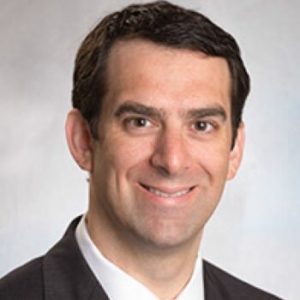How many saves do we really make? We count the dramatic ones, like that rare thoracotomy that worked out. But we often forget to count less flashy saves that play out long after an ED visit, say, that patient who quit smoking because we took a few minutes to chat about it. We tend to overestimate how much of our careers are about the former and underestimate how much are about the latter.
Explore This Issue
ACEP Now: Vol 38 – No 10 – October 2019Today, few actions that emergency physicians can take have a higher mortality benefit than obtaining an X waiver. The X waiver permits physicians to prescribe Suboxone (buprenorphine/naloxone) for opioid use disorder patients. The training takes about a day, is inexpensive, and saves lives.
Consider the impact. Of emergency patients who receive naloxone for an opioid overdose, a staggering 5 percent will be dead within one year.1 Can you think of an acute disease that we routinely discharge that has such a high one-year mortality rate? Studies suggest that maintenance therapies (like Suboxone) can save many of those lives.2 Opioid use disorder stands alone as the only major substance abuse disorder in which abstinence is more dangerous than agonist treatment with agents like buprenorphine and methadone. Opioid agonist therapy is the gold standard for opioid use disorder treatment. It reduces relapses—and reduces mortality. If we went into business to saves lives but are not willing to do this, we’re failing. If we don’t think that these patients deserve our time or efforts, we are letting our biases and blind spots get in the way. More than 70,000 Americans died from opioid misuse in 2018. This cannot stand.
Sadly, for many of our patients, a near-death experience from opioid use is not a one-time occurrence. As soon as they’re revived, they’re ready to go. You’ve probably seen this kind of patient many times. They’re glad you revived them, they are sometimes—but not always—outwardly grateful, and they’re not interested in treatment. Some take us up on our offer to take a free Narcan kit to go. But others are actually ready to quit. How can we find these patients? It’s easy. Just ask them. For these individuals, prescribing Suboxone in the emergency department is the single best way we can help them.
If I want to save the most lives during my career, mastering my cricothyrotomy and thoracotomy skills is a huge waste of time compared with being waivered and having “the talk” with opioid use disorder patients.
So Why Ban the X Waiver?
Getting the X waiver is a small but worthwhile hassle. It takes about eight hours and a couple hundred bucks, and you have to do a small amount of electronic paperwork. ACEP and many other groups offer these courses. Do this now! I did it last year, and I haven’t regretted it for a nanosecond. I have started a small number of patients on Suboxone. I may have already saved one or more lives by doing so. During that time, I have had zero successful thoracotomies. If we are keeping track of otherwise healthy lives saved, buprenorphine is clearly winning—if not already, then certainly in the long run.
But I also freely admit that getting that waiver was indeed a “small” hassle. And even that small hassle appears to be preventing physicians who want to get waivered from doing so. For any armchair behavioral economists out there, this is a prime example of what Nobel Prize–winning economist Richard Thaler has termed “sludge.” Sludge is “excessive or unjustified frictions that make it more difficult for consumers, employees, employers, students, patients, clients, small businesses, and many others to get what they want or to do as they wish.” Sludge is what keeps you from signing up for things you actually want, like that tax shelter for your medical expenses or child care. Everyone hates sludge. But emergency physicians are particularly averse to it. The X waiver requirement would not pass what economist Cass Sunstein calls a “sludge audit,” an exercise designed to determine whether any barriers preventing a particular action are reasonable and worthwhile. (Mr. Sunstein and I published an opinion this month in The Boston Globe calling for removing the X waiver requirement on this basis).
For that reason, I join many experts in calling for the X waiver requirement itself to be erased from the law books. This summer, the American College of Medical Toxicology made this stance its official policy. ACEP endorsed the position and now has its own statement to the same effect. Bipartisan legislation in both chambers of Congress has been proposed. Let’s urge our lawmakers to move forward on this.
While the fate of the X waiver is unknown, it’s unlikely to go away immediately. In the meantime, I encourage you to take any and all steps to help our opioid use disorder patients. Go and get your X waiver! Also: Ban the X waiver!
References
- Weiner SG, Baker O, Bernson D, et al. 402 one-year mortality of opioid overdose victims who received naloxone by emergency medical services. Ann Emerg Med. 2017;70(4 suppl):S158.
- Kakko J, Svanborg KD, Kreek MJ, et al. 1-year retention and social function after buprenorphine-assisted relapse prevention treatment for heroin dependence in Sweden: a randomised, placebo-controlled trial. Lancet. 2003;361(9358):662-668.
Pages: 1 2 3 | Multi-Page






No Responses to “Opinion: Doctors, Get X Waivered and Ban the X Waiver”